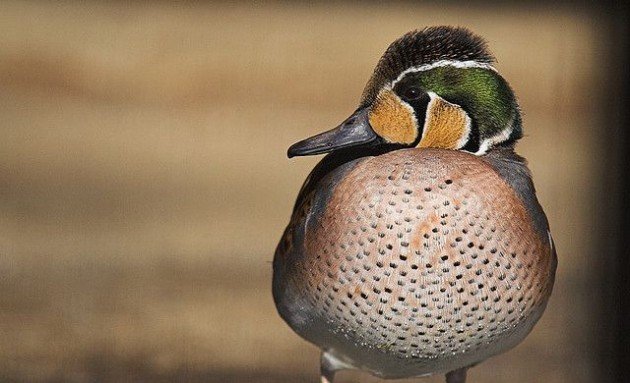
I admit that sometimes I am pretty negative about ducks. They’re a bit creepy. I mean, I’ve had occasion to link this notorious paper no less than three times so far this year. But this, this above all redeems ducks: they sit still long enough that you can show them to your non-birding friends. It doesn’t matter how beautiful the warbler, how majestic the raptor, how iridescent the hummingbird: if they insist on flying up or across or away and out of your field of vision before you can show your friends where to point the binoculars, they make cruddy ambassadors for birding. Ducks, on the other hand, have a charming tendency to just sit. Maybe they dive, or maybe they stick their butts up in the air, but for the most part, you can get any non-birder, be they two or one hundred and two, on a duck. I’ve seen whole classes of middle-schoolers get enthusiastic over identifying a Mallard in a Golden Guide and sketching it in their nature journals.
And in spring, there are such lovely ducks to show them. A few years back, in Montana, my non-birding friend Kaylen and I quested after the Baikal Teal and encountered legendary success. Now she is visiting me in New York, and though I have no intercontinental rarities to show her, we did take a walk around the Reservoir at Central Park last week to see what spring has swept our way.
There were Mallards and Canada Geese in plenty, of course, along with Double-crested Cormorants which Kaylen did not find very appealing — although she appreciated their grace in diving more than their awkward perched forms. The Northern Shovelers were a bigger hit, especially when we finally found one with its bill not tucked away in a sleeping posture, and the Ruddy Ducks just starting to show their breeding colors, and the Buffleheads and the story of how they got their name. But best of all — not only for Kaylen, but also for me, because I always love to see them — were the Hooded Mergansers, close to shore and displaying vigorously. Hooded Mergansers make great ambassadors — pretty, often confiding or at least not shy, and laden with non-horrifying fun facts like serrated bills. No need to get into the more… edgy aspects of their behavior and biology unless the audience seems receptive.
So there, I have said something nice about ducks: they may not make good role models, but they surely do make useful icons.





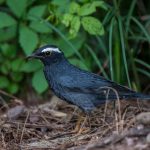

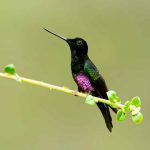
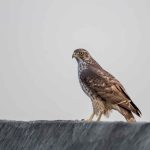

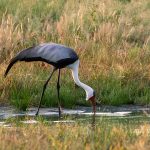

Yeeessss! The Greatest Auk is back!!! You’ve been missed!